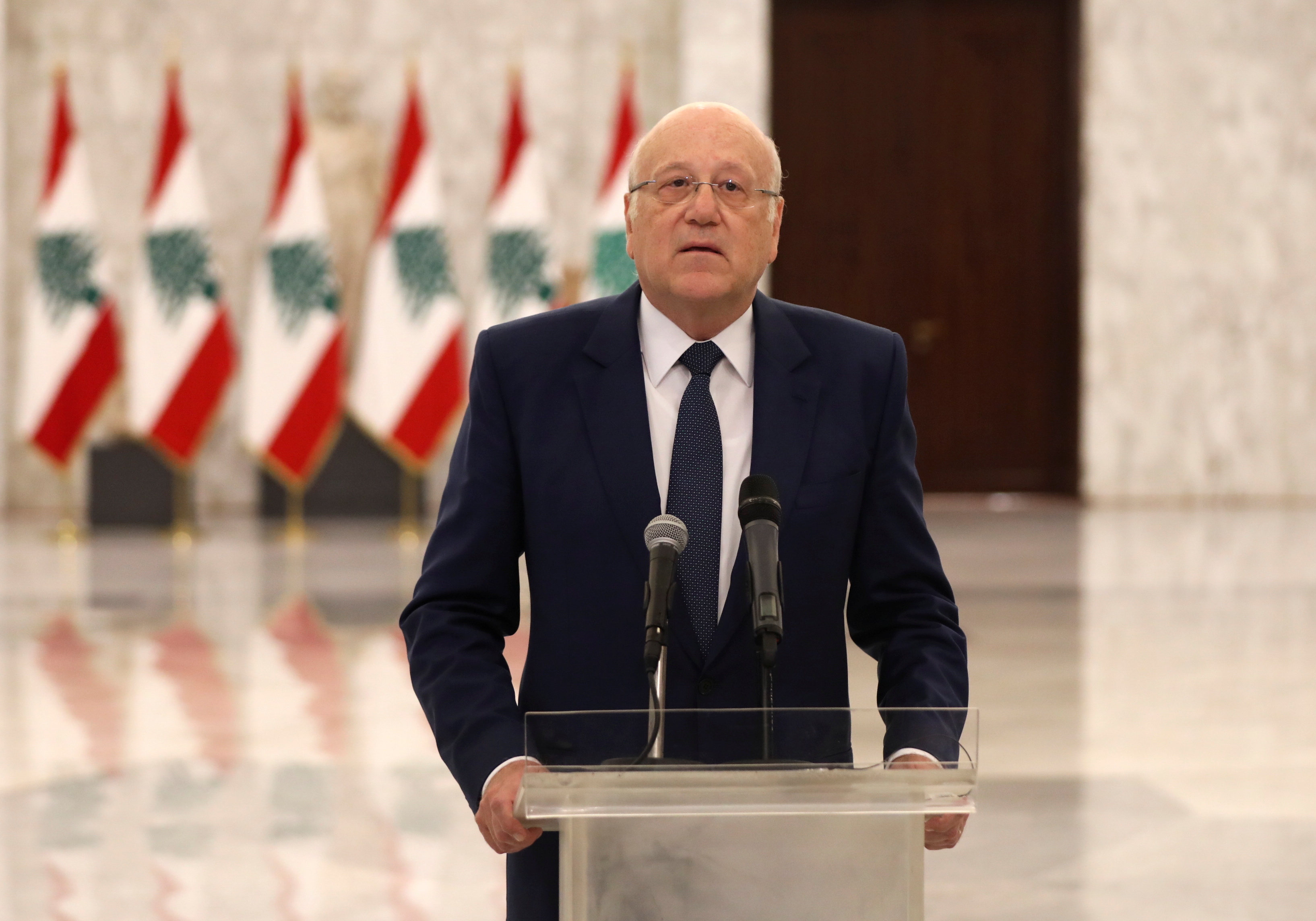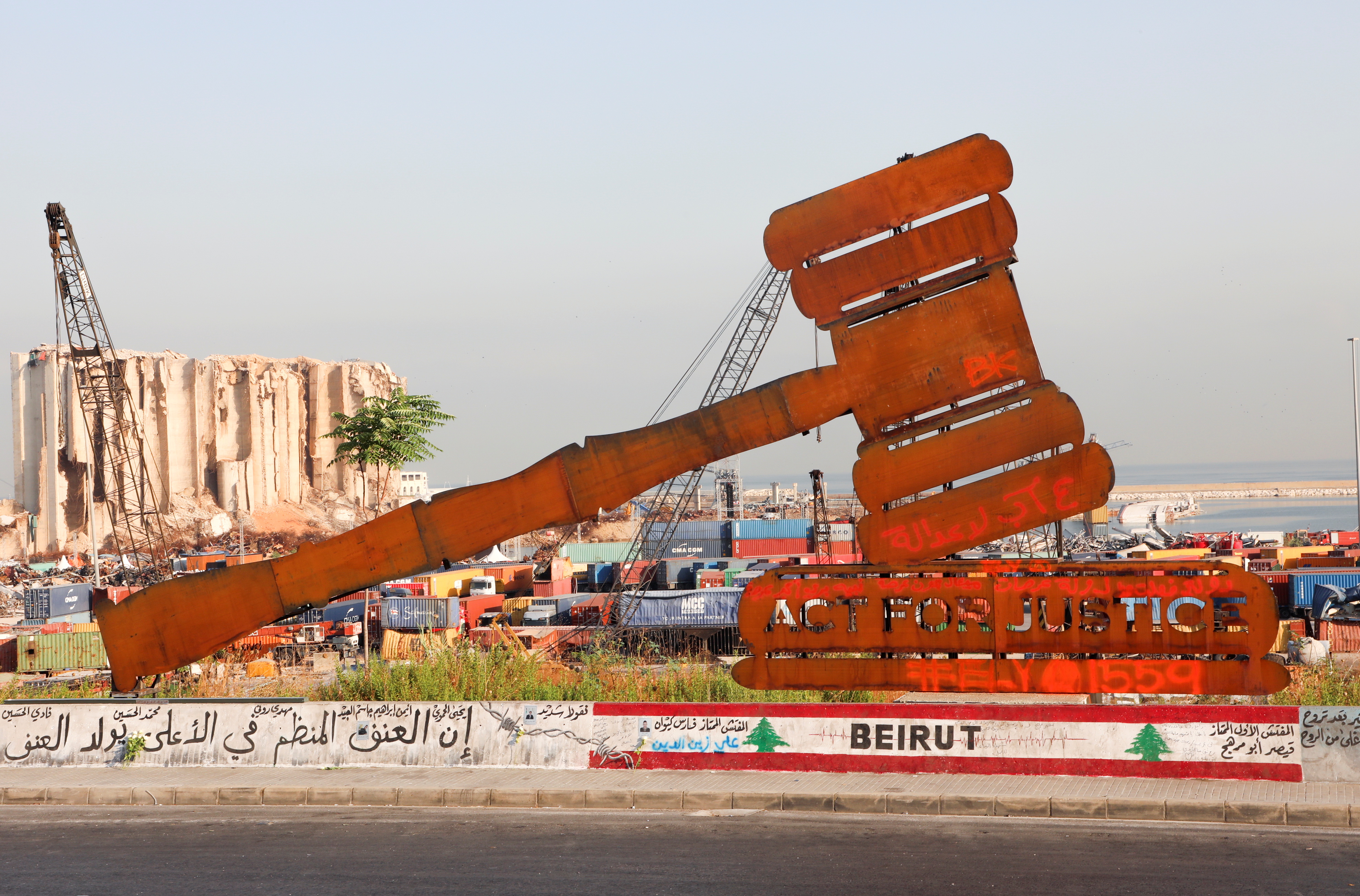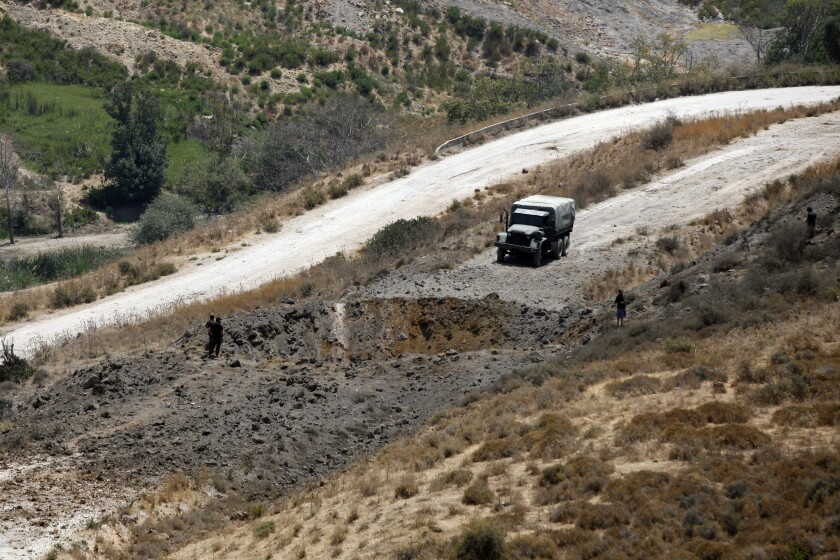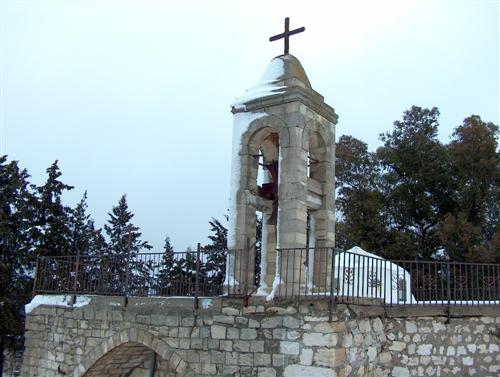الاساءة الى البطريرك الراعي ترتد على اصحابها ولن تؤدي الا الى المزيد من التأييد له خارجياً وداخلياً من المواطنين الشرفاء الذين يؤمنون بلبنان فقط وقبل كل شيء

by thearabweekly.com — BEIRUT – The artist meticulously cuts small pieces of yellow and red glass, then lays them in a pattern to recreate the stained-glass windows that were the trademark of Beirut’s Sursock Museum, shattered in last year’s port explosion. Conservators, hunched over with magnifying glasses, fill lines of paint loss caused by the explosion with their brushes and weave together tears thread by thread under microscope. Other workers delicately piece back together broken shards of ceramics. “It has been very hard to see my work of 30 years on the ground, back to being sand … But it is important to rebuild the museum,” said Maya Hussaini, the artist who worked on the stained-glass windows during a major renovation at the museum that finished in 2015 and is back rebuilding them now, “I had to go back to my archive to dig out my designs to bring it back to how it was,” she said.
Perched on the hills of the Achrafieh neighbourhood hundreds of metres from the Beirut Port, the 60-year-old Sursock was the beating heart of Beirut’s creative scene. The country’s only modern art museum, it boasts a collection of Lebanese art dating back to the late 1800s. It has long provided a rare public and free space for art, not even closing throughout Lebanon’s 1975-1990 civil war. Restorers and artists have been working to revive that role after the museum was decimated by the Aug. 4, 2020 port explosion.
The explosion ripped through the three-story building, unhinging the doors, wrecking everything down to the fourth underground level. Windows shattered, including the stained-glass windows of its façade. The art collection was badly hit. At least 57 of the 130 pieces on display were either broken or torn, including Dutch artist Kees Von Dongen’s portrait of Nicolas Sursock, after whom the museum is named. The nearby 19th-century landmark Sursock Palace, one of the most storied buildings in the Lebanese capital, was also wrecked in the blast.
by asumetech.com — Supporters of the Lebanese Hezbollah militia launched an incitement campaign against young Yahya Timani on Friday, who filmed the prevention of rocket firing at the population of Shwaya village in Hasbaya district in southern Lebanon, members of the Lebanese party. The sites of social network they released a photo of the young […]
ولو انني اكرر نفسي اتمنى على فخامة الرئيس ان يدعو المجلس الاعلى للدفاع للاجتماع الان لبحث موضوع الاعتداء الاسرائيلي على لبنان في اليومين الماضيين وليقول كلمته قبل اي كلمة اخرى ويتخذ الاجراءات المناسبة كما يرى ذلك مفيداً وضرورياً
BY LAURIE KELLMAN AND ZEINA KARAM ASSOCIATED BEIRUT — The militant group Hezbollah fired a barrage of rockets toward Israel on Friday, and Israel hit back with artillery in a significant escalation between the two sides. It was the third day of attacks along the volatile border with Lebanon, a perennial focus of Middle East conflict where tensions between Israel and Iran, which backs Hezbollah, occasionally play out. But comments by Israeli officials and Hezbollah’s actions suggested the two were seeking to avoid a major conflict at this time. Israel said it fired back after 19 rockets were launched from Lebanon, and Prime Minister Naftali Bennett swiftly convened a meeting with the country’s top defense officials. No casualties were reported. “We do not wish to escalate to a full war, yet of course we are very prepared for that,” said Lt. Col. Amnon Shefler, spokesman for the Israel Defense Forces.
The attack sparked tensions between local residents and Hezbollah. Videos circulated on social media after the rocket attack showed two vehicles, including a mobile rocket launcher, being stopped by villagers in the southeastern village of Shwaya in Hasbaya region, near the border with the Golan Heights. The windshield of one vehicle was smashed. Some of the villagers could be heard saying: “Hezbollah is firing rockets from between homes so that Israel hits us back.” The Lebanese army said it arrested four people who were involved in the rocket firing and confiscated the rocket launcher. It said Lebanese troops and U.N. peacekeepers are taking all measures to restore calm. Hezbollah issued a statement saying that the rockets were fired from remote areas, adding that the fighters were stopped in Shwaya on their way back. “We lived a similar period in the 1970s, when Palestinian fighters were carrying out guerrilla attacks against Israel. We are now to the same status, and this is causing tension,” said Ajaj Mousa, a resident of nearby Kfarchouba.
سجعان قزي
اليومَ ليس يومًا جديدًا. منذُ انفجارِ المرفأ كلُّ أيّامِ السَنةِ 4 آب. لا اسِمَ لها آخَر. لا أشهرًا ولا أسابيعَ ولا أيامًا. اكتفَت بهُنيهةِ الانفجار. كانت الهنيهةُ دهرًا. بعدَها لم تتوالَ الأيّامُ. خَجِلَت أنْ تُطِلَّ فتَنتَحرَ فوقَ جثامينِ الشهداء. سنةَ 4 آب ما عاد سكّانُ لبنانَ أربعةَ ملايينِ نسمةٍ، بل مِئتي شهيدٍ وسِتّةَ آلافِ جريحٍ. سنةَ 4 آب ما عادت مساحةُ لبنان عشْرةَ آلافٍ وأربَعَمائةٍ واثنينِ وخمسينَ كلم²، بل مدى العالم والفضاء. شَخَصت الشعوبُ نحوَنا. رأت انفجارًا وسَمِعَت دُخانًا يُرشِدُها إلى “المغارة”، حيث وُلِدَ الشهداءُ الجُدد.
أتَوا جميعًا يَسجُدون أمام المرفأِ وبيروتَ والشهداءِ باستثناءِ أركانِ الدولةِ اللبنانيّةِ (أو غيرِ اللبنانيّة). سنةَ “4 آب” كان إيمانويل ماكرون رئيسَ جمهوريّةِ لبنان. وكانت حكوماتُ الدولِ العربيّةِ والأجنبيّةِ حكومةَ لبنان. وكان البطريركُ بشارة الراعي رمزَ الموقِفِ الوطنيِّ. وكان البابا فرنسيس مُحرِّكَ الديبلوماسيّةِ الدوليّةِ. يومَها برز التضامنُ بين اللبنانيّين. عَزفوا على وَترٍ كئيبٍ واحِد. كلُّ بيتٍ شَعَر أنَّ الانفجارَ في الدار. كلُّ لبنانيٍّ أحسَّ أنّه مصابٌ. بدا تبادلُ التعازي بين الناس حَرفًا زائدًا وكلمةً جوفاءَ ورديفَ صلاة. أما المسؤولون، فاعتَبروا أن تعازيَهم عَبرَ شاشاتِ التلفزيون إنجازٌ عظيمٌ يُغني عن العدالةِ والحقيقةِ وتأليفِ حكومة، وعن… رحيلِهم الآتي. قالها البطريركُ الراعي للجموعِ أمس: “حافِظوا على الوطنِ وغَيِّروا الباقي…”

By Anchal Vohra — foreignpolicy.com — Lebanon’s ruling elite designated billionaire Najib Mikati to be prime minister at a time when Lebanon’s masses have fallen under poverty. He comes from Tripoli, the poorest city in Lebanon, but owns a yacht, a stake in Pepe Jeans, a South African telecom firm, and prime real estate in New York and London. According to Forbes, Mikati is one of the richest men in Lebanon with an estimated worth of $2.7 billion. But such wealth highlights the widening inequality, and political dysfunction, in a country where most people find it hard to imagine how they will ever again make ends meet. Nobody believes Mikati’s leadership is sustainable even in the medium term. It is Lebanon’s misfortune that its political class, and many of its international backers, believe he is worth supporting nevertheless. Mikati is seen by most Lebanese, by contrast, as a symbol of an old and corrupt order. In October 2019, the month Lebanon erupted in protests, he was charged with corruption for illegally profiting from housing loans meant for lower-income groups, but the case was buried. Most insulting to the suffering of the Lebanese is the fact that Mikati has previously served as prime minister—and last did so when a ship laden with thousands of tons of ammonium nitrate first docked at Beirut’s port. He now returns to power a year after the unsafely stored explosive caught fire, exploded, and fatally damaged some of the most glorious parts of the city.
Is Mikati the man to extract Lebanon from its myriad crises? Activists say he is a pawn of the political class, a stopgap prime minister tasked with preserving the status quo. But optimists believe that as an experienced businessperson, Mikati might strike the right compromises and find a way to keep the country afloat until elections next year. Lebanon’s backers in the West are clearly hoping that, through Mikati, a disruptive collapse of Lebanon’s political order can be avoided for now. Lebanese politics has been in dysfunctional stasis ever since Beirut was shaken by an explosion so strong it has been compared to the Chernobyl disaster. Around 200 innocent people were killed, thousands of people were injured, and hundreds of thousands of people were rendered homeless in an incident that could have been avoided. One week later, Hassan Diab was forced to resign as prime minister. But Diab has continued as caretaker prime minister as former Lebanese chief of staff Mustapha Adib and Lebanese Prime Minister Saad Hariri failed to form a government.
CAIRO, (Reuters) – Saudi Arabia’s foreign minister said on Wednesday the insistence of the Iran-backed Hezbollah group on imposing its will in Lebanon was a major reason for the country’s crisis, according to Saudi state TV and a foreign ministry statement. Prince Faisal bin Farhan Al Saud also said Riyadh was concerned that no tangible […]
هل سيجتمع المجلس الاعلى للدفاع لمعالجة موضوع الاعتداءات الاسرائيلية على لبنان كون القضية ليست من اختصاص مجلس الأمن المركزي الذي اجتمع في الاونة الاخيرة

A justice symbol monument is seen near the grain silo damaged during last year’s Beirut port blast as Lebanon marks the one-year anniversary of Beirut port explosion, in Beirut, Lebanon August 4, 2021. REUTERS/Mohamed Azakir
By By Tamara Qiblawi — cnn — It’s been a year since one of the world’s largest ever non-nuclear explosions ripped through Lebanon’s capital, killing more than 200 people. On any given day in Beirut’s worst-affected neighborhoods, theories about the explosion still circulate. No two stories of human tragedy are alike, and most interactions between people here end not with a goodbye, but with an invocation that Lebanon’s ruling elite be toppled. The political class is, overwhelmingly, blamed for the disaster. At just after 6 p.m. on August 4, 2020, hundreds of metric tons of ammonium nitrate ignited, sparking the massive blast in the city’s port. The industrial chemicals had been improperly stored there for years due to the failure to act by successive governments and lawmakers across the political divide. That much is clear. But for people across Lebanon, there are still many unanswered questions about what led to the tragedy, and there has been no sense of closure in the 12 months since the explosion.
Here’s what we still don’t know.
What triggered the blast?
Because of the many inquiries by journalists and rights groups over the past year, we know that the ammonium nitrate — stored alongside fireworks in a poorly maintained warehouse — was a disaster waiting to happen. Six urgent letters sent by customs officials since 2014 — the year the material was unloaded at the port under mysterious circumstances — had alerted the authorities to the danger posed by the chemicals. One was written by a port official in May 2020, just months before the blast. “This substance, if ignited, will lead to a large explosion, and its outcome will almost obliterate the port of Beirut. If the substance were exposed to any kind of theft, the thief would be able to use this substance to build explosives,” warned the document, which was obtained by CNN after the incident. Beirut’s port is just 100 meters from some of the city’s most densely-populated neighborhoods. The blast destroyed not only a large part of the port, but also left swathes of the city in tatters. The damage was estimated at between $3.8 and $4.6 billion. It is clear that successive leaders — four governments and three prime ministers — either would have or should have known about the threat posed by the material, and that little was done to address the danger.
But what is far from clear, 12 months on, is what ignited the ammonium nitrate. According to a report by Human Rights Watch, Tarek Bitar, the judge charged with investigating the explosion, is looking into several theories. One is that sparks from welding works that day caused a fire in hangar 12, the warehouse where the chemical was being stored. Another is that an Israeli strike was the catalyst, though Lebanese aviation officials reported that local radar systems did not detect military aircraft over Lebanese airspace in the hour or so before the blast, Israeli officials have denied any involvement, and Bitar himself has said the Israel theory was highly unlikely, according to HRW’s report. Bitar is also exploring the theory that the explosion was an intentional act, according to HRW. A huge fire broke out Thursday at the Port of Beirut, triggering panic among residents traumatized by last month’s massive explosion that killed and injured thousands of people.Huge fire breaks out at Beirut port a month after explosion “Speculation that Hezbollah may have wanted to destroy the ammonium nitrate at the port supposedly to hide that some of the ammonium nitrate in the stockpile had been used by Hezbollah’s ally Bashar al-Assad in Syria to produce barrel bombs increased as reporting emerged regarding the connection between the cargo owners and individuals sanctioned by the U.S. for alleged links to Assad,” the report said, referring to an investigative report by local journalist Firas Hatoum.




